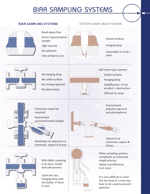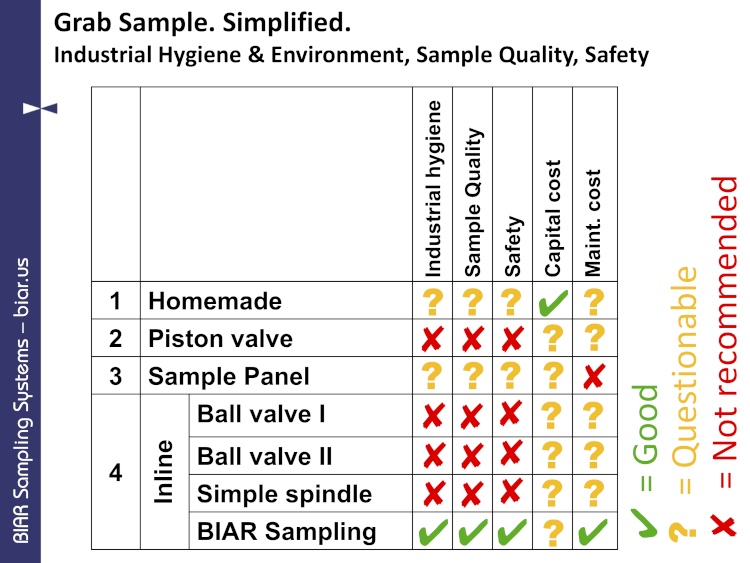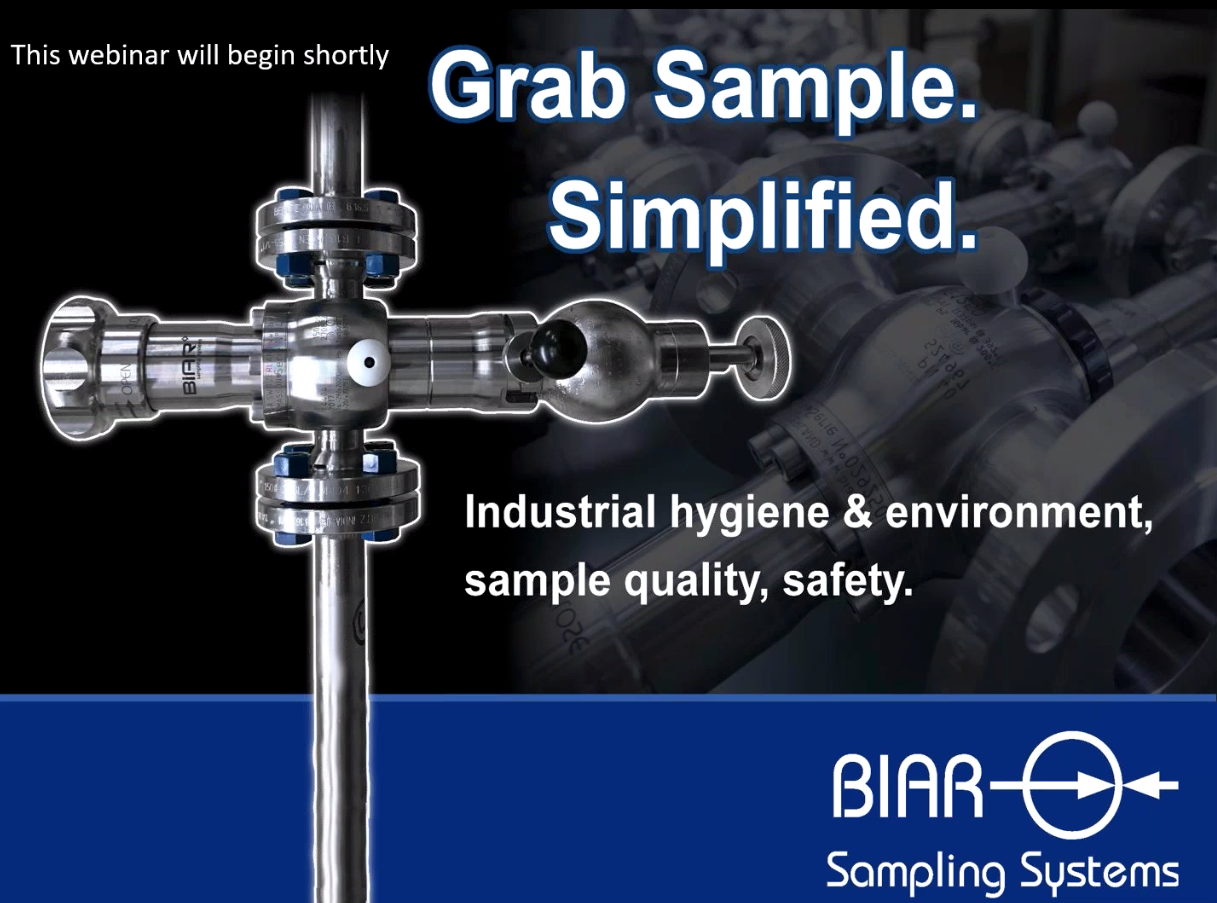Grab Sample Systems Global Overview
Globally, the most common grab sample systems can be grouped into four different categories:
- Homemade systems
- Piston-type sample valves
- Sample panels
- Inline sample valves

Product flows through the valve and the stem or spindle plugs the outlet. When operators want to collect the sample, they actuate the valve, and this action retracts the spindle which opens the outlet. The product then flows into the receptacle.
It is important to note that the product flowing through the valve must be representative. This means the best place to install an inline sample valve is on the process line, or on a bypass/fast loop between the high pressure and low-pressure sides of the pump.


Unlike BIAR Sampling Systems, other manufacturers' designs allow for greater mechanical tolerances. As a result, the fabrication process is less expensive, but it has a significant disadvantage because it allows for dead space, which raises maintenance and operating costs and has a negative impact on industrial hygiene & compliance.


There are two types of sampling ball valves:
- A quantitative system where the sample fills the cavity in the ball before being released into a bottle
- A flow-through ball
The problem with this system is that it has dynamic seals around the ball that are subject to wear and will increase maintenance costs. Another drawback is that residue is likely to stay in the ball and contaminate the sample, and could plug the outlet


Systems designed by in-house engineers are generally composed of a few standard valves and possibly tubing or other components. Homemade systems come in all shapes, and some are more sophisticated than others.
The advantages of those systems is their capital cost: because they’re engineered in-house, their design cost is not usually taken into consideration and neither is the warranty cost. They might be a good option for sample points that are used only occasionally and that are not critical to the process because the main problem with homemade systems is their reliability.

The piston or ram-type sample valve is installed on the side of the reactor or of a larger pipe. These valves are great for powder sampling and they have their advantages for certain slurry applications, but their biggest problem is dead space after the piston. If industrial hygiene & environment or other low-emission standards have to be met, these valves are probably not a good option.


Sample panels are what’s also known as “closed loop systems”. These systems are generally composed of small tubing, ¼” or smaller and they have multiple valves that need to be operated in a precise sequence to purge and flush the dead space. It is a relatively complicated system to use, requires advanced training for operators, and due to the nature of the components its maintenance cost can be quite high. Because the system is complicated, it is also unsafe.





